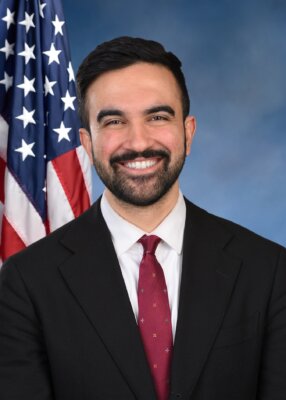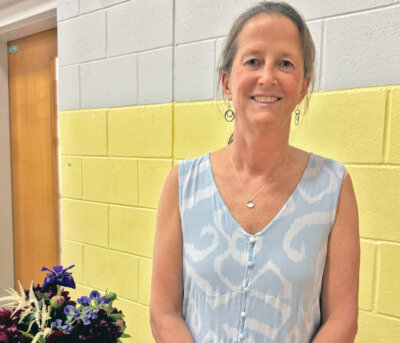What’s good for public schools is good for private
Based on a University of Vermont study, the Vermont Legislature is updating the education funding formula so districts that serve more disadvantaged students have the ability to raise the revenues they need to care for their children.
The study used school spending and test scores statewide to estimate how much additional school spending is associated with the ability to educate different types of students to the state average test score. Those estimates informed how much more to “weight” the formula for different kinds of students.
 These newer, bigger proposed weights are an estimate of how much more districts need to spend to overcome harms to students caused by factors like low wages, unstable housing, exposure to environmental toxins, lack of access to health care, disrupted education and trauma. The assumption is that spending in schools can compensate for these harms.
These newer, bigger proposed weights are an estimate of how much more districts need to spend to overcome harms to students caused by factors like low wages, unstable housing, exposure to environmental toxins, lack of access to health care, disrupted education and trauma. The assumption is that spending in schools can compensate for these harms.
The state could support paid leave, affordable housing, higher minimum wages, more affordable and accessible health care, and a fully funded mental health system, so that all parents can care for their children. In the absence of that, Vermont turns to public schools as the last safety net.
However, Vermont does not weight the vouchers to private “independent” schools for which our Education Fund pays. It makes little sense to fund public districts based on estimated needs and costs, but then pay private school vouchers without regard for needs and costs of the students they enroll, especially since the legislature allows these private schools to decide which students are a “good fit,” thus opening the door to a wide range of discriminatory practices.
Currently, the state relies on statewide average public school spending levels to set tuition rates for students who take vouchers to private schools. A 2015 analysis found that Vermont students who take vouchers to private schools are more advantaged than the average Vermont student. Failing to adjust tuition voucher rates for needs makes inequality even worse.
Moreover, if the legislature continues to exempt districts that don’t operate public schools from the excess spending penalty that applies to districts that operate public schools, it incentivizes smaller and wealthier districts to close their public schools to limit what they have to pay into the Education Fund.
These two related policies — weighting vouchers and applying the same high spending penalty to districts that don’t operate public schools — must be changed at the same time, unless the legislature’s goal is continued erosion of both equity and the state’s public education system.
Changing weights in the funding formula would make it possible for less wealthy, sparsely populated and remote districts to raise more revenue to support their children. The resulting increase in spending won’t be offset by reductions in other districts, because there are limits to the cuts many districts can and will support, especially when their schools compete with “independent” schools that are dependent on voucher-funded students, sell themselves based on low student to teacher ratios, and are not required to comply with the same statutes and rules that apply to public schools
Currently, private schools that serve more privileged students are “overfunded” through their vouchers, including in private schools with exclusionary enrollment practices. The rest of the state helps pay, in ways that incentivize more privileged districts to close their own public schools.
The UVM report produced a simulation to inform weighted funding, which can also be used to inform weighted vouchers. Using the weights in the UVM simulation, high school students who:
- are not economically disadvantaged and not living in remote rural areas would receive vouchers for about $10,000,
- are economically disadvantaged would get vouchers closer to $35,604,
- are eligible for English Language Learning services are eligible for another $13,502,
- are economically disadvantaged and eligible for English Language Learning vouchers worth $40,506.
For example, a high school student in Lyndon who is not disadvantaged would receive a base voucher of $10,000 to take to Lyndon Institute (or Phillips Exeter Academy which otherwise provides education free to families with incomes under $75,000) as the legislature allows. An economically disadvantaged student who was also an English language learner would bring a voucher worth about $40,000, supposedly to provide additional support services although, of course, there is no way to verify if and how those “support” dollars would be used in private settings. One Massachusetts private school said Vermont’s “vouchers save the school dollars to give to other students with financial aid needs.” These could include students from other states.
If voters in a Vermont voucher school district want to provide larger vouchers for wealthier children, they could do so through a vote. However, they’d also be subject to the excess spending penalty, just like districts that operate public schools.
We don’t think Vermont should pay vouchers to private schools that do not have open enrollment and which are not designated as a public education replacement for a sending district by a vote of their electorate. But since this is the system our elected leadership prefers, they can at least protect our wallets and children by weighting the tuition vouchers for which taxpayers are forced to pay.
Bruce Baker is a professor at the Rutgers Graduate School of Education and Senior Fellow at the Learning Policy Institute. Rebecca Holcombe lives in Norwich and is a former Vermont Secretary of Education.
Related Stories
Popular Stories
If you enjoy The Charlotte News, please consider making a donation. Your gift will help us produce more stories like this. The majority of our budget comes from charitable contributions. Your gift helps sustain The Charlotte News, keeping it a free service for everyone in town. Thank you.
Andrew Zehner, Board Chair









